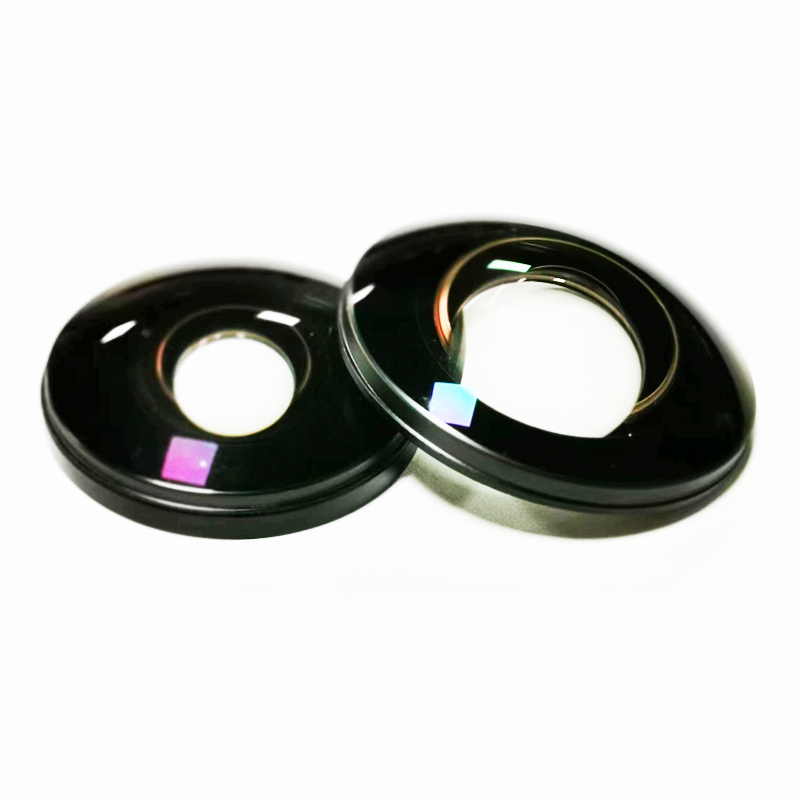The World of Optical Glass Lenses: Precision, Clarity, and Innovation
2024-08-21
In the realm of optics and imaging, optical glass lenses play a fundamental role in shaping the way we see and interpret the world. Whether it's through the lens of a camera, a microscope, or a pair of eyeglasses, optical glass lenses are crucial in providing clarity, precision, and functionality. This blog explores the significance of optical glass lenses, their types, manufacturing process, and applications, highlighting their importance in modern technology and everyday life.
What Are Optical Glass Lenses?
Optical glass lenses are specially designed components made from high-quality glass that manipulate light to achieve desired imaging effects. They are used to focus, magnify, or correct light, allowing for clearer and more precise vision in various optical devices. Optical glass lenses are crafted with meticulous attention to detail to ensure that they meet the required optical standards and performance specifications.
Key Types of Optical Glass Lenses
1. Convex Lenses:
Convex lenses are thicker in the center than at the edges and are used to converge light rays to a focal point. They are commonly used in magnifying glasses, cameras, and microscopes to enlarge images and focus light. Convex lenses are essential in applications where image magnification and sharpness are critical.
2. Concave Lenses:
Concave lenses are thinner in the center than at the edges and diverge light rays away from a focal point. They are used in devices such as eyeglasses for nearsightedness (myopia) and in optical instruments to spread light and correct vision. Concave lenses are important for adjusting light paths and vision correction.
3. Biconvex and Biconcave Lenses:
Biconvex lenses have two convex surfaces and are used to focus light to a single point. Biconcave lenses have two concave surfaces and are used to spread light rays apart. Both types are utilized in various optical systems to achieve specific imaging effects.
4. Aspheric Lenses:
Aspheric lenses have a more complex surface profile compared to traditional spherical lenses. They are designed to reduce optical aberrations and improve image quality. Aspheric lenses are used in high-precision applications such as camera lenses, eyeglasses, and optical instruments.
5. Achromatic Lenses:
Achromatic lenses are designed to minimize chromatic aberration, which occurs when different colors of light focus at different points. These lenses are made from combinations of different types of glass to correct color distortions and are commonly used in high-quality optical systems like telescopes and microscopes.
The Manufacturing Process of Optical Glass Lenses
1. Material Selection:
The quality of optical glass lenses begins with the selection of high-grade optical glass. The glass must have specific optical properties, such as low dispersion and high clarity, to ensure optimal performance. Common materials include crown glass, flint glass, and specialized optical glasses with tailored properties.
2. Cutting and Shaping:
Once the glass is selected, it is cut into rough shapes and then precisely ground and polished to achieve the desired lens curvature and optical quality. The shaping process involves using specialized machinery to create the lens surfaces with exact specifications.
3. Coating:
After shaping, the lenses may undergo various coating processes to enhance their performance. Anti-reflective coatings reduce glare and improve light transmission, while protective coatings can make the lenses more resistant to scratches and environmental damage.
4. Testing and Quality Control:
Each lens is thoroughly tested for optical accuracy, including evaluating its curvature, focal length, and aberrations. Quality control measures ensure that the lenses meet industry standards and perform as expected in their intended applications.
5. Assembly:
In applications where multiple lenses are used together, such as in camera systems or microscopes, the lenses are carefully assembled into optical systems. Precise alignment and positioning are crucial to achieving the desired optical performance.
Applications of Optical Glass Lenses
1. Photography and Videography:
Optical glass lenses are fundamental in cameras, both digital and film-based. They enable high-resolution imaging, precise focus, and color accuracy. The quality of a camera lens directly impacts the clarity and detail of photographs and videos.
2. Eyewear and Vision Correction:
Optical glass lenses are used in eyeglasses and contact lenses to correct vision impairments such as nearsightedness, farsightedness, and astigmatism. They provide clear and accurate vision correction, enhancing the quality of life for millions of people.
3. Microscopy:
In microscopy, optical glass lenses are used to magnify and observe tiny specimens with high precision. The quality of the lenses affects the resolution and detail of the images, making them essential for scientific research and medical diagnostics.
4. Telescopes and Astronomical Instruments:
Optical glass lenses in telescopes and astronomical instruments enable the observation of distant celestial objects with clarity. They are designed to gather and focus light from distant stars and planets, providing detailed images of the universe.
5. Medical Equipment:
Optical glass lenses are used in various medical devices, including endoscopes and surgical instruments. They provide clear imaging and precision for medical procedures, improving diagnostic and treatment capabilities.
6. Consumer Electronics:
Optical glass lenses are found in various consumer electronics, such as smartphones, tablets, and projectors. They enable features like high-definition video recording, image stabilization, and clear display projections.
Choosing the Right Optical Glass Lens
1. Determine the Application:
Identify the specific requirements of your application, including the desired optical performance, lens shape, and coating needs. Different applications may require different types of lenses and optical properties.
2. Consider Optical Properties:
Evaluate the optical properties of the lens material, such as refractive index, dispersion, and clarity. Choose lenses that meet the performance criteria for your application.
3. Assess Quality and Precision:
Ensure that the lenses are manufactured with high precision and undergo rigorous quality control. High-quality lenses provide better optical performance and durability.
4. Consult with Experts:
If you are unsure about which optical glass lens to choose, consult with optical experts or suppliers. They can provide guidance based on your specific needs and help you select the most suitable lenses.
Conclusion
Optical glass lenses are integral components that enhance our ability to see, capture, and interpret the world around us. Their precise manufacturing, advanced materials, and versatile applications make them essential in various fields, from photography and vision correction to scientific research and consumer electronics. By understanding the types, benefits, and applications of optical glass lenses, you can appreciate their role in advancing technology and improving visual experiences. Invest in high-quality optical glass lenses to ensure clarity, precision, and innovation in your optical systems and devices.



